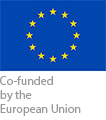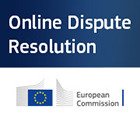European product safety
Are you buying a new product? Obviously, you want to be sure that it is safe. In Europe, product safety is governed by specific regulations.
Banned hazardous products
In the EU, products have to comply with the legal safety instructions issued by the European Directive 2001/95/EG*. This General Product Safety Directive (GPSD) covers general European product safety aspects. Some items, such as electrical and gas equipment, are also subject to more specific directives.
The law on European product safety prohibits traders from selling hazardous products and holds manufacturers and/or distributors liable for any adverse consequences.
European Safety Gate
In Belgium, the Federal Public Service Economy manages product safety. Whenever the Directorate General Economic Inspection identifies infringements, it will impose sanctions upon the relevant manufacturers and/or distributors. These can be administrative (prohibition to sell, destruction, etc.) or legal (fine, court order, etc.) sanctions.
Has a dangerous product been identified in an EU country? The local authority will report this to the European Safety Gate (formerly RAPEX ), which will quickly alert other EU countries to ensure that the product is banned there also. You can consult the most recent warnings of reported dangerous products.
Do you have a complaint concerning the safety of a product, or do you suspect it is a counterfeit? Submit it online to the Federal Public Service Economy.
CE logo
No doubt you have come across the CE logo before, for example on toys, electrical equipment or machinery. What does this mean? It indicates that the manufacturer has produced his products in accordance with European guidelines and that the products can be sold throughout the European Union, Turkey, Iceland, Norway, the United Kingdom and Liechtenstein. But remember: it is the manufacturer who attaches the logo. It does not indicate government approval or guarantee product safety.
* Does not apply to all products for sale. Products including foods, medication, biocides, fertilisers and chemical substances are subject to separate regulations.


